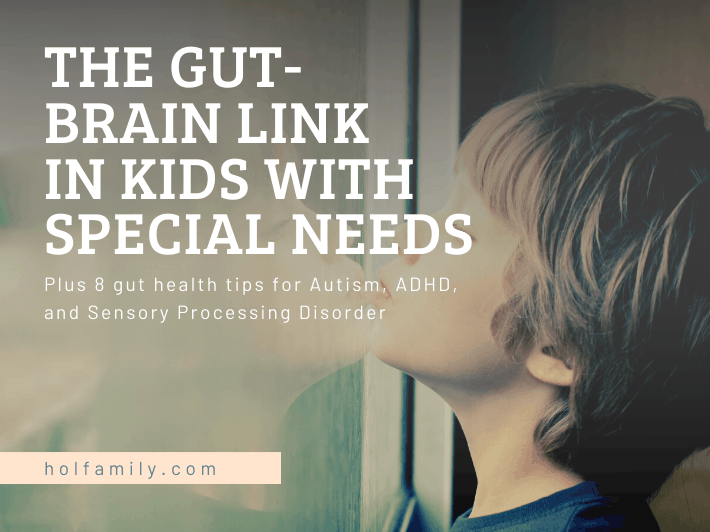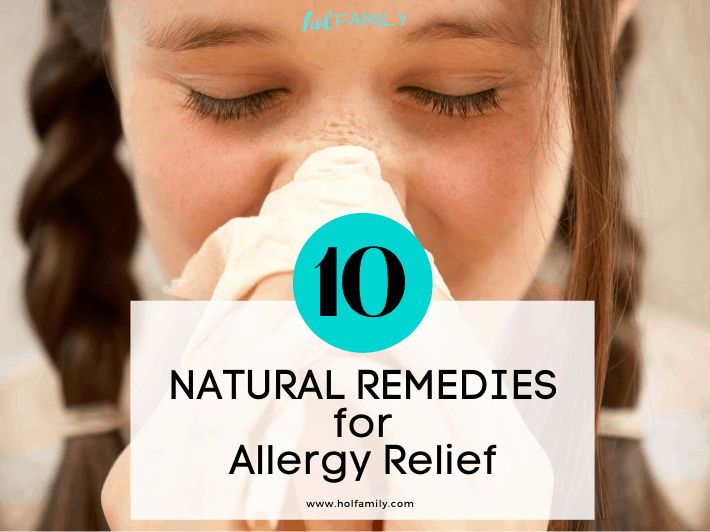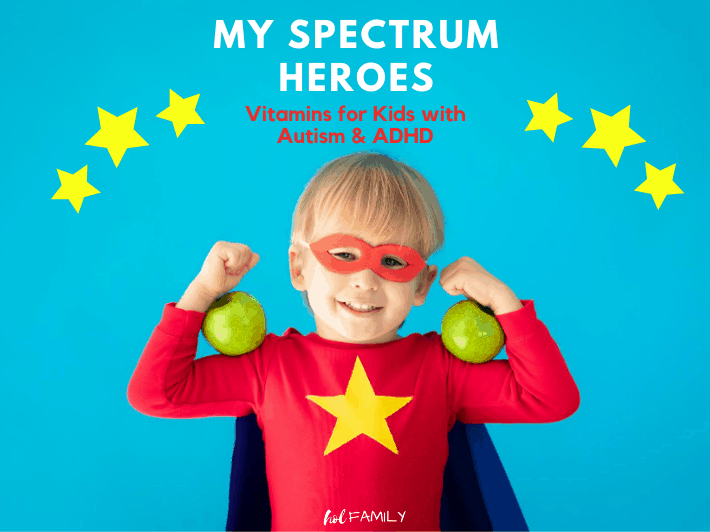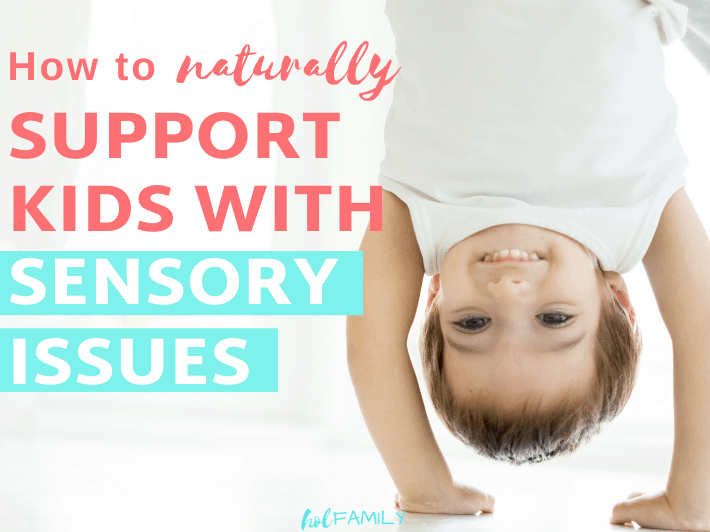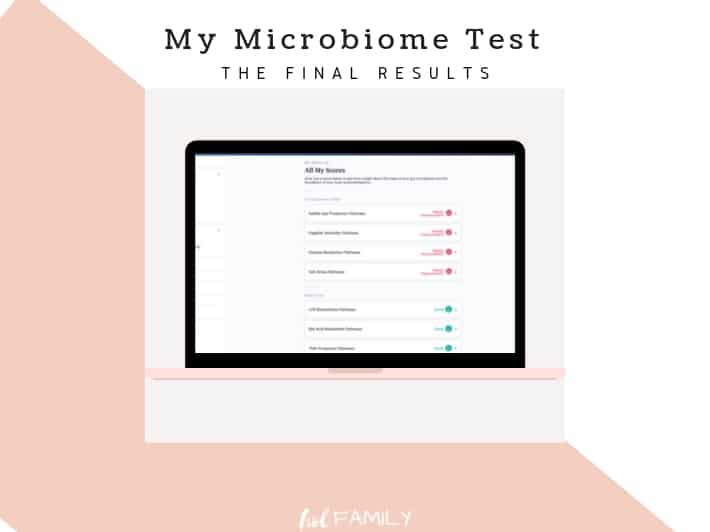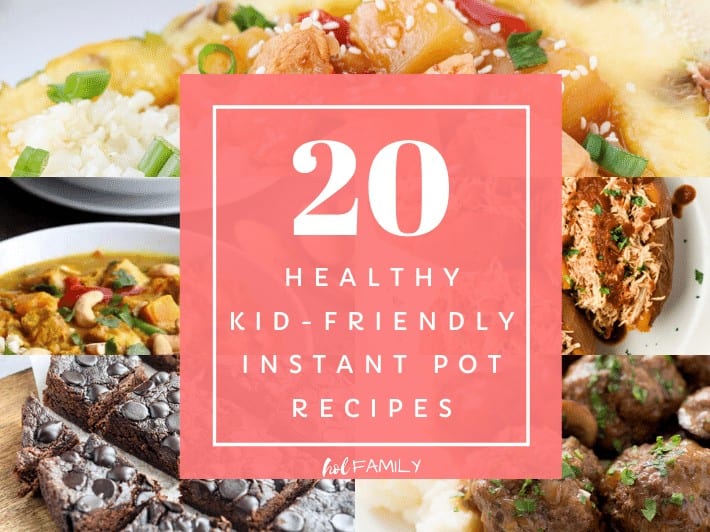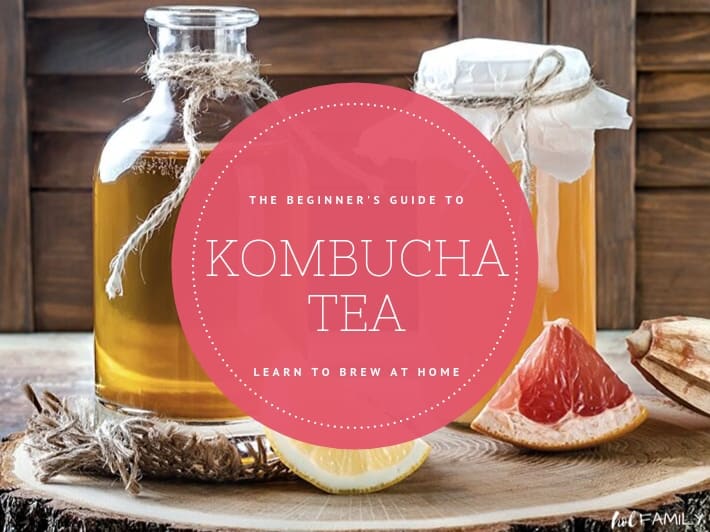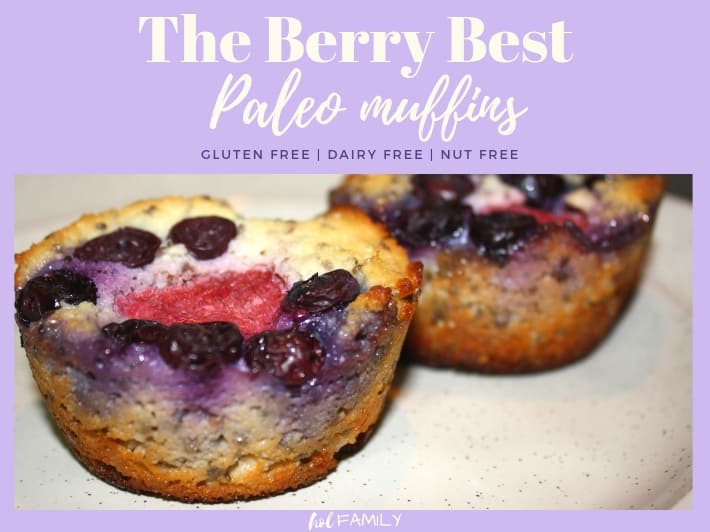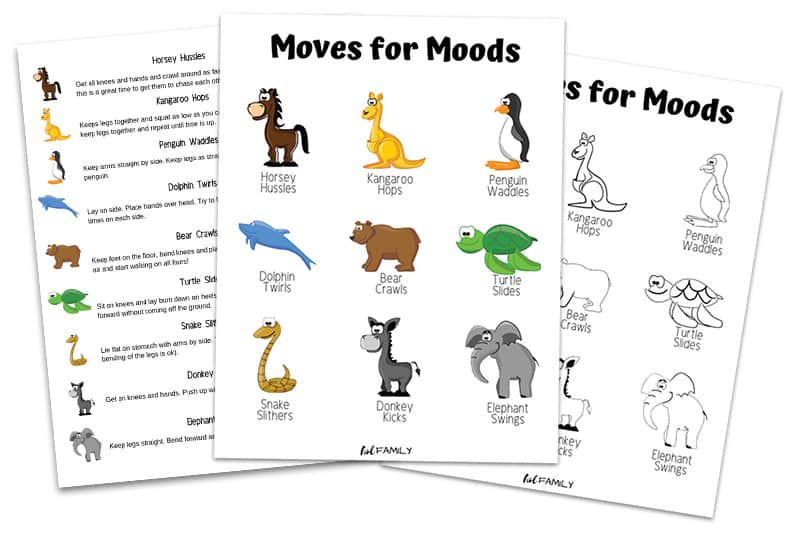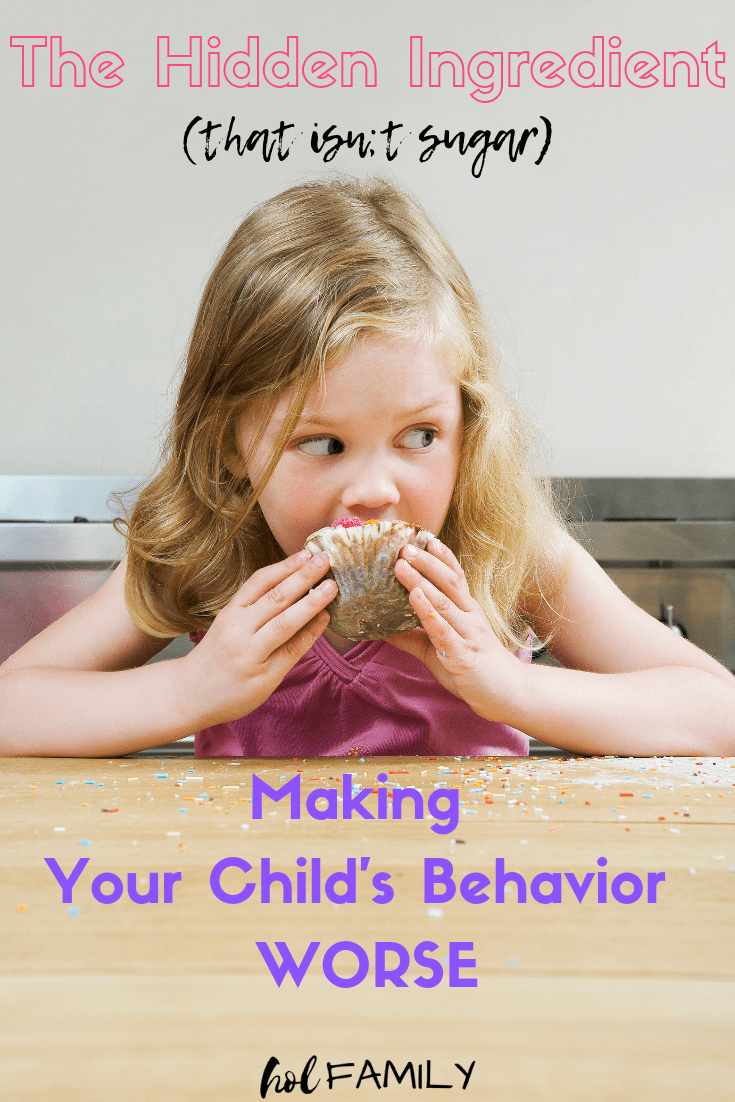
It was Valentine’s Day, and I wanted to do something special for breakfast to surprise my kids. I had been up late the night before getting fun ideas off of Pinterest, and finally settled on making red, heart shaped pancakes.
One of our family traditions is to have pancakes every Saturday morning, and I usually whip up a batch of paleo pancakes or use a gluten free, dairy free mix. We use fruit or a small amount of honey to sweeten and have fresh berries for our topping.
Lots of research has suggested that a gluten free, casein free diet is optimal for kids on the autism spectrum and avoiding refined sugar is also beneficial for kids who struggle with behavioral issues (1)
These pancakes were gluten free, dairy free, and low in sugar…seemingly safe (or so I thought).
The kids LOVED the bright red edible hearts and gobbled them up with some fresh strawberries also cut into heart shapes.
Their tummies were full and so was my heart, knowing that I had filled their little love tanks and created such a memorable Valentine’s morning for them.
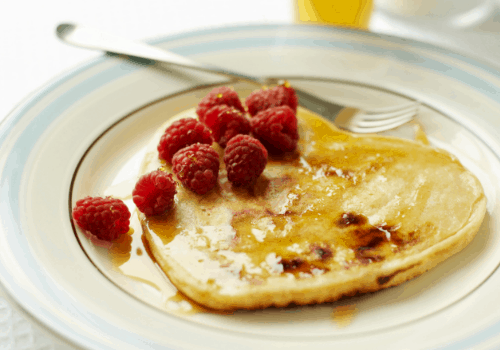
An hour later…it was their turn to create a memorable morning for me. Lets just say I was the one seeing red!
I literally thought my kids had gone crazy. I swore they had been drugged. Toys were flying, everyone was screaming, there were arguments, tantrums, aggression, and a family heirloom was destroyed.
Luckily, I knew that there is a clear correlation between diet and mood/behavior, but I was completely mystified as to what the offending ingredient could be.
I remember doing a mental checklist off everything they had eaten that morning. No gluten, check. No dairy, check. No sugar, check.
And then it hit me…
The only new ingredient I had added to the pancakes was the red food coloring, something my kids had never eaten before. In fact, the only reason I even had it in my house was to make homemade playdough (although now we use this to dye playdough instead).
Previously, I knew that food coloring wasn’t good for my kids and usually avoided it, but I thought adding a couple of drops just this once wouldn’t be an issue…boy was I wrong.
It turns out that food additives, including artificial colors, have been linked to temper tantrums, behavioral issues, developmental delays, and can worsen symptoms in kids with childhood behavioral and developmental disorders (such as autism, ADD/ADHD, ODD, SPD, and many others).
Changing the diet can be a great starting place for naturally supporting kids with behavioral disorders, along with reducing inflammation, eliminating toxins, supporting the immune system, and healing a leaky gut.
Typically, parents reduce sugar and may even opt for a GF/CF diet. Unfortunately, even many so-called “healthy” packaged foods still contain some pretty scary ingredients. Most parents are shocked to discover that children may be consuming more than 20 different additives per day.
Below, I’ll cover five ingredients lurking in our cupboards that are scientifically linked to behavior in kids.
1) Artificial Colors
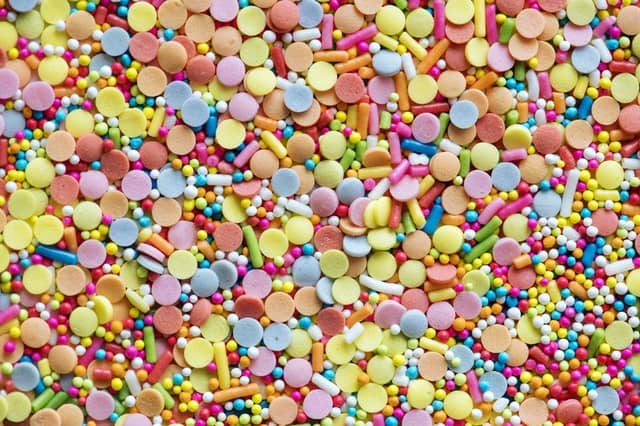
Artificial colors and dyes are used in a variety of foods and beverages to make them more visually appealing (especially to children). According to the FDA, the use of artificial colors has increased over 500% since the 1950’s and continues to rise (2).
Food dyes have come under intense scrutiny over the last decade as research has linked these additives to a whole host of health problems including hyperactivity, behavioral problems, asthma, and even cancer (3,4,5,6). One particular food color, Blue 1, may even cross the blood-brain barrier.
Multiple studies have looked at the role that artificial colors play in childhood behavior and have shown improvement in behavioral disorders such as ADHD and hyperactivity when they are removed from the diet (7).
Alternatives: Natural food dyes made from real food ingredients are available and a great alternative for use in cooking and baking. Natural mica powders can also make a great substitute when making things like playdough or DIY bath and beauty products. You can also try your hand at making your own food dyes.
2) Preservatives
Food preservatives have also rapidly increased over the last several decades as people have moved away from consuming mainly fresh produce and meat to more packaged items.
There are many different types of preservatives found in food including sorbates, benzoates, sulphites, propionates, nitrites, nitrates, synthetic antioxidants, gallates, flavor enhancers and others.
While these types of additives may prevent food from going bad, they have the opposite effect in our bodies. Many of these preservatives have been linked to hyperactivity in children, allergic reactions, asthma, thyroid dysfunction, gastrointestinal symptoms, behavioral issues, and even cancer (8, 9, 10, 11, 12).
Alternatives: Try to avoid packaged and processed foods as much as possible, opting for fresh fruits, vegetables, and meats. Limit smoked and cured meats which are the main source of nitrites. Instead, buy local, grass-fed meat and pastured eggs. Canning and fermenting are also excellent options for making your own shelf-stable foods. Packaged foods may seem like the easier and cheaper option, but convenience comes at a cost to our health.
3) BHA & BHT
Technically, BHA (Butylated hydroxyanisole) and BHT (Butylated hydroxytoluene) fall under the above category as artificial food preservatives, but I believe they deserve their own category based on how dangerous these particular ingredients are.
Butylates are commonly found in pharmaceuticals, cosmetics, jet fuels, rubber, petroleum products, and embalming fluid, but they have also made their way into the food industry as a way to prevent fat from becoming rancid.
Some of the foods you may find containing these chemicals in your home include chewing gum, cereals, snack foods, high fat foods, and many others.
Research has shown that children and adults cannot metabolize these ingredients, leading to numerous health and behavioral problems. Some of the symptoms associated with BHA and BHT include allergic reactions, hyperactivity, rashes, asthma, and weight abnormalities. Animal studies have also shown an increase in birth defects, altered brain chemistry, as well as cancer (13,14).
Alternatives: Look for these harmful ingredients on food labels and avoid any products that list them. The dangers are compounded when products contain both ingredients since they are known to act synergistically. Kellogg’s is one of the biggest users of BHT, so opt for other companies that avoid the use of these preservatives.
4) MSG
There are close to 2,000 artificial flavors approved by the FDA, many of which are concerning for our health. One of the most scrutinized in the autism community is monosodium glutamate, or MSG.
MSG is a crystal like form of the naturally occurring chemical glutamate. By itself, it doesn’t really have much of a flavor but it is added to other foods to enhance their flavor and to impart a savory taste. Certain foods naturally contain high levels of glutamate, including seaweed, tomatoes, and soybeans.
One of the most popular types of food with high levels of added MSG is Chinese food, although MSG is found in many packaged and prepared foods under the disguised label of “spices” and “natural flavorings.”
MSG is considered to be a neurotoxin and studies in animals have shown it causes brain damage at high levels. In humans, MSG is known to cause adverse reactions with various symptoms such as headaches, chest pain, nausea, dizziness, weakness, difficulty breathing, worsening of asthma, and behavioural symptoms (15,16).

Alternatives: Always ask if food contains added MSG when dining out, especially at Asian restaurants. Limit or avoid foods that commonly contain MSG including canned soups, flavored chips, frozen dinners, instant meals, seasoning mixtures, artificial stocks, snack foods, and fast foods.
5) Artificial Sweeteners
We all know how harmful sugar is for our health, especially in children with behavioral disorders like ADHD and Autism. In an attempt to reduce the sugar content in many popular foods marketed as being healthier, low in sugar, or “diet” foods, artificial sweeteners are added.
There are numerous artificial sweeteners approved for use, but the most common three in the United States and Canada are aspartame (NutraSweet or Equal), sucralose (Splenda), and saccharin (Sweet’N Low).
These artificial sweeteners are between two hundred and six hundred times sweeter than real sugar. When used long-term, they can actually change the way our taste buds perceive sweetness, making us crave sugar and ultra-sweet packaged foods over fresh, healthy fruits and vegetables.
In fact, research is starting to show that artificial sweeteners may damage the gut microbiome and contribute to metabolic syndrome, ultimately increasing weight gain and obesity (17).
Research over the safety of artificial sweeteners have provided mixed results over whether they actually cause cancer in humans, but some of the other harmful side effects include headaches, seizures, gastrointestinal symptoms, metabolic dysfunction, rashes, and many other symptoms (18,19).
Artificial sweeteners are also classified as neurotoxins, meaning they have harmful effects on the nervous system, and the majority of neurotransmitters in our body are found in the brain and the gut. Many studies have shown that these are key areas of dysfunction in individuals with autism and ADHD.
Unfortunately, not enough research has been done on the link between artificial sweeteners and those with behavioral disorders, but the dangerous side effects on the nervous system alone are scary enough to warrant avoiding their use in those with Autism and ADHD (and everyone else in my personal opinion) (20).
Alternatives: Newer plant-based sweeteners are now widely available such as stevia and monk-fruit extract, although there is no data on their safety in autism and ADHD. The safest option is to make homemade baked goods and treats, using raw honey, coconut sugar, or fruit to add sweetness.
The Bottom Line
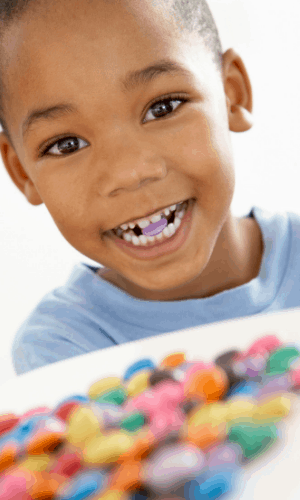
Over the last century, our food has changed so dramatically that it is hard to overlook the link between diet and the increase in behavioral and learning disorders in children.
Contrary to what many parents may believe, sugar is not the only bad guy when it comes to our food.
The evidence on the dangers of food additives is pointing to the fact that these dangerous chemicals could be making behavioral problems worse in children with Autism and ADHD.
Many popular diets for children with Autism and ADHD include avoiding many of these dangerous ingredients.
If you have a child with Autism or ADHD, OR are looking to improve behavior in your child, then removing foods containing these additives is a great place to start.
Wondering where to buy foods that are free from additives? Below is a list of my top ten choices for stores or brands that have set the bar high by removing these harmful ingredients.
*Please note: I am not receiving any compensation from these companies for this post. These recommendations are all based on my personal research.
10 Places to Find Kid-Friendly Food Without Harmful Additives
1) Whole Foods Market
Whole Foods Market is a large, international grocery chain that sells a wide variety of fresh and packaged foods. They also have cafes and bakeries in their stores, as well as a beauty department.
When you shop at Whole Foods, you can rest assured that 100% of the foods and products found within their stores are free from artificial preservatives, hydrogenated fats, artificial sweeteners, artificial flavors, and artificial colors.
2) Nature’s Path
This company prides itself on using organic, non-GMO ingredients that are free from artificial colors, flavors and additives. They have lots of amazing gluten free, dairy free, and even some grain free products.
Their children’s line called Enviro Kids serves up brightly colored cereals that are dyed using natural fruit and vegetable powders. Other products they have include hot cereals, granola bars, waffles, granola, and toaster pastries.
3) B. Good
If you are looking for a fast food company that has whole food values, look no further than this amazing restaurant chain that is popping up all over. With values centered on sourcing food locally and sustainably, supporting local farmers, and cooking seasonally to name a few, it is easy to fall in love B. Good and their “Food with Roots” motto.
They are committed to serving the freshest ingredients without preservatives, antibiotics, growth hormones, nitrates, artificial colors, flavors, or preservative. Even their eggs come from cage-free hens and their packaging is eco-friendly.
4) Kashi
This is another example of a company serving up cereal and other similar products that are organic, non-GMO and made from whole food ingredients.
Kashi also recently launched a kid’s line called Kashi by Kids, which has three cereals made for kids by kids. They have amazing superfood ingredients, are low in sugar, and use only food-based dyes for color.
5) Noodles and Co.
This American fast-casual restaurant offers international and American noodle dishes, pasta, soup, and salads. What they don’t offer is anything artificial!
On their menu you will find 14 varieties of fresh vegetables every day, zucchini noodles spiralized by hand, organic tofu, cage-free eggs, and antibiotic-free, hormone-free pork and bacon. Their food is also free from artificial flavors, colors, sweeteners or preservatives. Kid’s meals come with options like organic juice and fresh fruit.
6) Love Grown
We love the Love Grown brand and all that they stand for. Beans for breakfast! Their kid’s cereals are loaded with protein and other super-charged ingredients. Naturally bright colors come from ingredients like radish juice.
Love Grown products are all verified non-GMO, and most are GF and vegan as well. They are best known for their adult and kids cold cereals, hot cereal, and granolas.
7) Made Good
Made Good entered the scene at a time when healthy, packaged food for kids was incredibly hard to find. Their granola minis, granola bars, crispy squares, cereals, and baked cookies are perfect for packing in lunchboxes thanks to being free from the 8 most common kinds of allergens; peanut, tree nut, soy, dairy, egg, fish, shellfish, gluten, and sesame.
Made Good’s products are also free from additives, and are organic, gluten free/dairy free, and non GMO. Their snacks contain ethically sourced ingredients and contain one full serving of hidden vegetables!
8) Chipotle
A couple of years ago, Chipotle made a the news when they announced their goal in becoming the only national restaurant brand to use no added colors, flavors, or preservatives in their food. The company announced that their food is made from only 51 real food ingredients.
Chipotle’s food is also made from local and organically grown produce when available, dairy from cows raised on pasture and meats from animals raised without hormones or antibiotics, and completely GMO free.
9) Annie’s Homegrown
Annie’s is another company that features healthier versions of kid-friendly foods (such as mac and cheese, crackers, cereal, gummies, cookies, canned soups, and many others). Their food is all organic, non GMO, and free from high-fructose corn syrup, artificial flavors, synthetic colors, or preservatives.
Annie’s also takes a strong stand on climate change, ensuring their manufacturing uses minimal energy, maintains water efficiency, reduces waste, and using recycled or compostable packaging.
10) Panera Bread
It has been two years since this popular bakery and café revealed it was scaling back its 450-ingredient list to remove all additives, including things like phosphates, corn syrup, aspartame, and nitrites from deli meats.
Their new menu features food without artificial preservatives, sweeteners, flavors or colors from artificial sources. It is amazing to see companies setting an example for removing harmful chemicals from their menus.
What are your favourite brands/places to buy healthy food without harmful ingredients? Leave a comment below and let us know!

